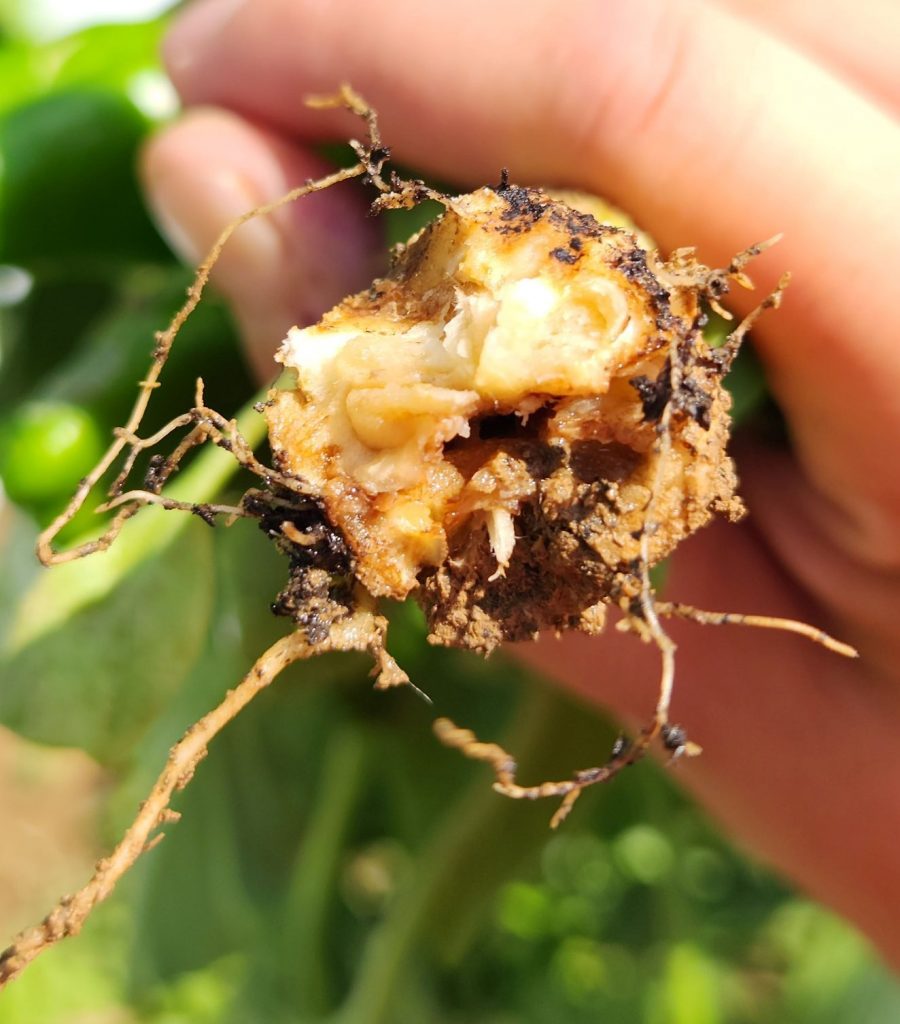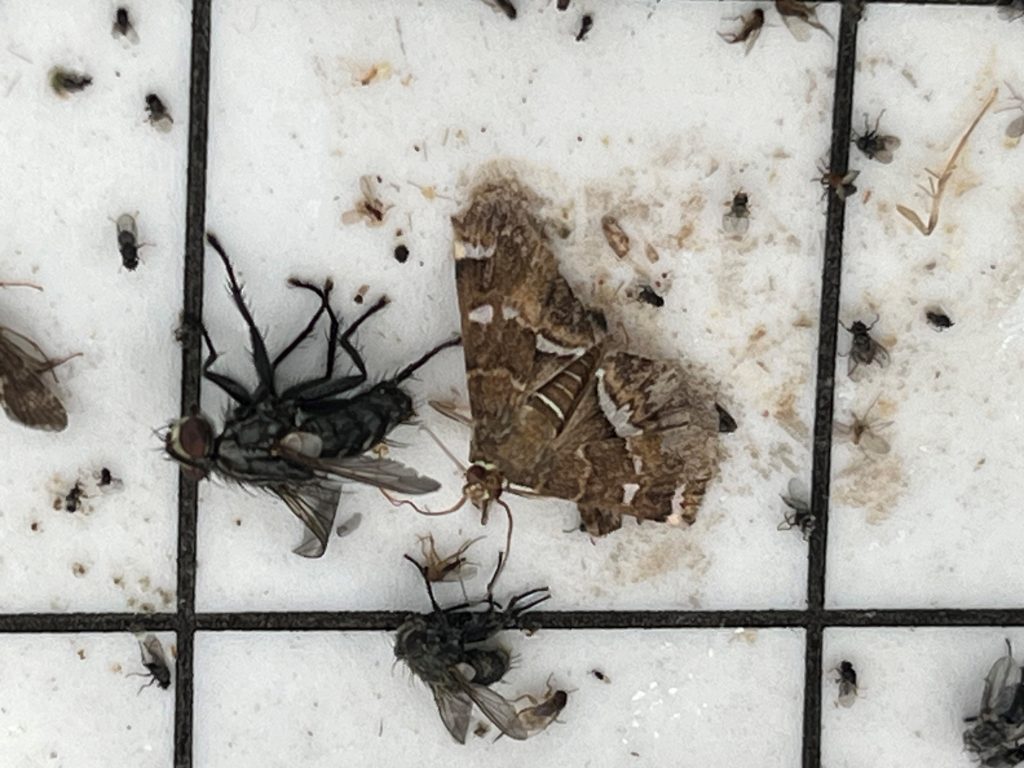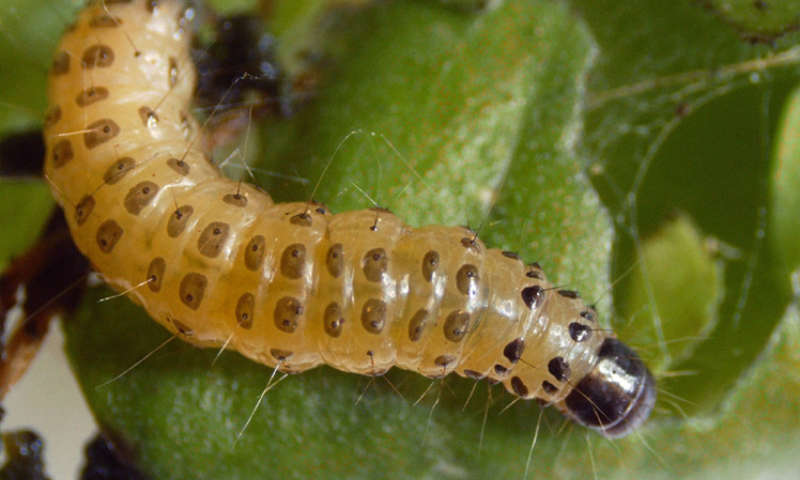By: Taylore Sydnor (graduate student), Tom Kuhar, and Alejandro Del Pozo (Department of Entomology, Virginia Tech)
The European pepper moth, Duponchelia fovealis, is native to southern Europe and became established on the west coast of the U.S. in 2010. Since, it has been reported in at least 15 states, including as a greenhouse ornamental pest in Virginia a few years ago. We’ve not heard much more about this invasive species until this summer when numerous pepper plants grown at Virginia Tech’s Homefield Farm in Whitethorne, VA began dying from girdling at the base of stems. The plants were mature and full of developing pepper fruit, which made it very frustrating.

With the help of several folks on the ORNAENT Digest Listserv, the problem was diagnosed. A European pepper moth pupa was found in one of the plants. Dr. Alejandro Del Pozo from the Virginia Tech Hampton Roads AREC has been monitoring for this pest in nurseries in eastern Virginia and shared some pheromone lures. This week we captured some EPM moths on delta traps placed in the pepper field at Homefield.

Although we have not 100% confirmed the identity of the moths, but they appear to look exactly like what has been described in the literature – based on size and color patterns; and given that that these moths oriented right to the lure septa containing the sex pheromone of EPM, I’m pretty sure that we have this species attacking peppers in Virginia, especially given the distinct conspicuous girdling damage that we observed. This seems to be pretty indicative of EPM.
What do we know about this pest?

It is a significant pest of ornamental plants and pepper crops. The larvae cause chewing damage to the stems, roots, flowers, and base leaves of crops. The damage appears as crescent-shaped holes on the outer edge of the foliage. The holes left by the larvae can facilitate fungal infection. They produce silk and can be found on the underside of leaves and on the soil surface by the main stem of the plant. We observed mostly stem girdling damage, which ultimately killed many plants. The European pepper moth larvae can be hard to detect due to small size. Large numbers of this insect can cause significant damage to the crop. It can easily spread through the movement of cut foliage and potted plants. The adult European pepper moth is small (~9-12 mm long) and is brown in color with two distinctive gold bands on the forewings. A female adult moth can lay up to 200 eggs and are white/green in color. A number of insecticides have been shown to provide effective control including diamides, spinosad, pyrethroids, acephate, and Bt among others. Insecticides should target early instar larvae before feeding. Monitoring for the moth with pheromone lures and delta traps was effective for detecting this invasive pest species.
Reference used:
https://entnemdept.ufl.edu/creatures/veg/leps/european_pepper_moth.htm
